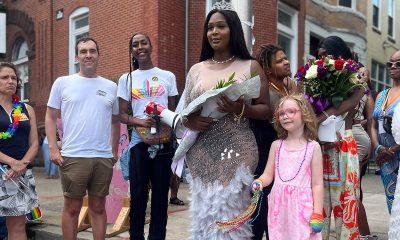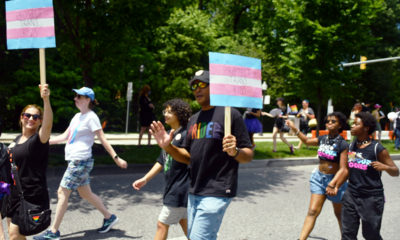Maryland
Moms for Liberty: A tale of two counties
In book ban fight, Maryland’s progressive Howard a stark contrast to neighboring Carroll
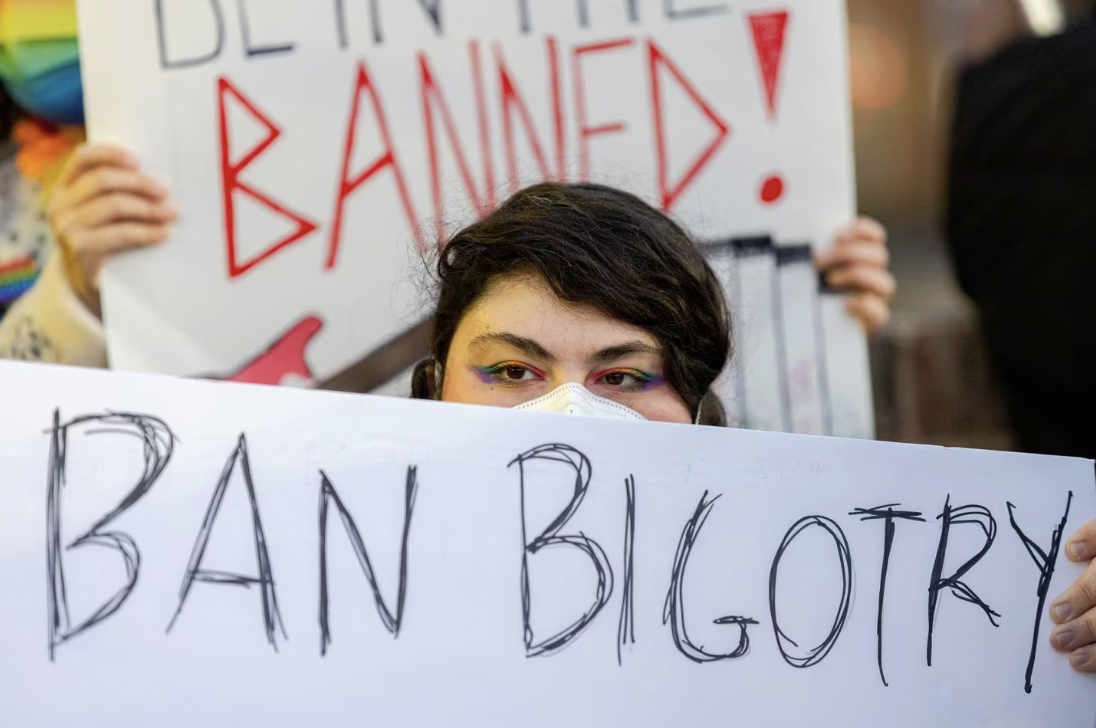
COLUMBIA, Md. — “I know there are children here,” said Jessica Garland, a little tremble to her voice. “This is my warning. There’s stuff that’s going to be said from these books. So if you want to remove your child, please do so now.” And with a deep breath, she continued. “He pushes against me, shoving the tip inside with a pop.” She paused for effect. The audience let out a few giggles and gasps of faux horror. Not a single parent removed their child from the room.
Garland was here in Howard County visiting from Carroll County, where as the chapter vice chair of Moms for Liberty, she had succeeded in pushing for the school board to ban “sexually explicit content” from school libraries. But her presentation here was attended by more mocker moms than soccer moms, fully clad in rainbow capes and Hawaiian necklaces, who had come to protest the event.
It is unlikely that the Howard chapter of Moms for Liberty will succeed in getting any books removed from schools, where none of the school board has signed the Moms for Liberty pledge to “secure parental rights at all levels of government.” The political makeup of Carroll and Howard counties is nothing alike: 60% of voters in Carroll voted for Trump in 2020, where only 26% in Howard did. Carroll County is an odd island of red in a sea of blue among the metropolitan counties of Maryland, with proximity to either Baltimore or D.C. It has a long history of right-wing proclivities, as a hotbed of KKK activity in the 20th century, and with only 59 of its 4,500 residents voting for Abraham Lincoln back in 1860.
Howard County, in contrast, seems like a queer paradise. The school system boasts a huge selection of LGBTQ programming, none of which can be found in Carroll schools: a biannual rainbow conference, LGBTQ book clubs for all age levels, Q&As for parents with queer kids, a queer literary magazine, and a Pride prom. But just because Moms for Liberty won’t succeed in replacing the school board doesn’t mean that they haven’t had any impact in Howard County.
At the Jan. 6 meeting of the school board, parents complained that their kids felt unsafe because of the recent political activity. And the school system has been pestered with numerous requests through the MPIA (Maryland Public Information Act) to report on the extent and funding of its LGBTQ programming. While the Howard County School System does employ a LGBTQIA+ Initiatives Specialist, Danielle DuPuis, they have not funded the many initiatives DuPuis has orchestrated since her hiring in 2022. DuPuis pays for the programming with fundraising through T-shirt sales, and with grants from organizations like Community Allies of Rainbow Youth. This lack of funding is a consequence of the school system’s tight budget, not of Moms for Liberty — but it is hard to imagine the school system diverting any of its limited funding to its LGBTQ programming with Moms for Liberty breathing down their neck.
This programming is important precisely because Howard County schools are not a queer paradise. On March 9, I attended one of Howard’s newer offerings: a Q&A for parents of queer students. The stories they told were shocking. Two parents described a Rainbow Fun Run that was held at Clarksville Middle School to raise money for queer youth. Students were encouraged to wear rainbow colored clothes for the event — but a dozen of the middle schoolers showed up in black from head to toe, wearing pins that said “There Are Only Two Genders.” It was refreshing to see the group react with humor. “Black is one of the colors of the rainbow,” one said. “You’re still participating anyway!”
Jessica insisted at the Moms for Liberty meeting that they were not trying to target LGBTQ books. “We did not target homosexuals, transsexuals [sic],” she said. It was clear the protesters in the audience did not believe her from the signs they carried: “Protect Trans Youth,” “Hate and Ignorance are Not Family Values,” “Ban Bigots Not Books.” They have good reason to distrust the intentions of Moms for Liberty. The Capital News Service conducted an analysis of the books Moms for Liberty targeted for removal in Carroll County, and concluded that a disproportionate number of those books were written by queer authors on queer subject matters.
But even if the quest to ban sexually explicit material from school libraries is in bad faith, the Moms for Liberty are right about one thing: The books they are targeting are sexually explicit. No protester at the event argued that the books weren’t sexually explicit, and yet no one defended the presence of sexually explicit books in schools, either. Perhaps this is not so surprising. Who wants to be seen arguing that schools should carry pornographic books? It’s far easier to defend LGBTQ books, and giggle at the spectacle of dirty words on a PowerPoint.
Unfortunately, the research on adolescents and pornography has a long way to go. In a highly cited meta-analysis of more than 100 articles on the subject published between 1995 and 2015, Jochen Peter and Patti M. Valkenburg were able to conclude very little. The literature points to an association between adolescent pornography use and both casual sex and sexual violence (both as victim and perpetrator). But the articles suffer from numerous biases. For one, they do not discriminate the content of the pornography: videos depicting consensual and non-consensual sex are lumped in together. There is a huge heteronormativity bias: queer forms of pornography have not been extensively studied. There is a negativity bias: the articles are actively looking for negative effects, not positive ones. (And all of this research has been done on internet pornography, not sexually explicit books in school libraries.)
At the end of the Moms for Liberty meeting, Nina Yukich, a fifth grade student, stayed behind to speak with Jessica. And though the library staff had already stacked up chairs for the night, I stole a seat to watch the exchange. Nina’s guardian, Dinah Yukich, had had a hostile encounter with Jessica during the Q&A portion of the event. Jessica called on Dinah as the “gentleman back there,” and Dinah accused her of “willfully and intentionally” misgendering her.
Jessica leaned down as she spoke with Nina, who stood clutching her copy of “Gender Queer,” one of the most common targets for book bans in schools. “Who do you want to talk to about this stuff?” Jessica asked. “Do you feel comfortable talking to teachers? And if this is your trusted adult — if you don’t have a trusted adult, or a friend, or a mom, or can write a letter to somebody — if you don’t have anybody to talk to […] you shouldn’t be alone reading that book.” I couldn’t believe my ears. Here was Jessica, not so subtly impugning Dinah as an untrustworthy adult. I was fully prepared for another hostile exchange.
But Dinah just stood by, observing. At no point did she interrupt Jessica, or start arguing on Nina’s behalf. It occurred to me that Dinah was letting Nina have an independent experience of the event. Dinah and Nina could obviously confer afterwards — it wasn’t as though Dinah was abdicating her role as guardian. But in letting Nina experience the night on her own, Dinah was giving the two of them something to genuinely confer about.
Dinah’s approach seems to me a model of the kind of parenting at stake in this debate over books. Do we let kids engage with sexually explicit material on their own, trusting them to confer with adults afterwards? Or do we need to be there all the while, ripping out any pages we don’t want them to see?
CJ Higgins is a postdoctoral fellow with the Alexander Grass Humanities Institute at Johns Hopkins University.
Maryland
Bethesda church hosts transgender, nonbinary photo exhibit
Photographer Gwen Andersen showcases community members of all ages, backgrounds
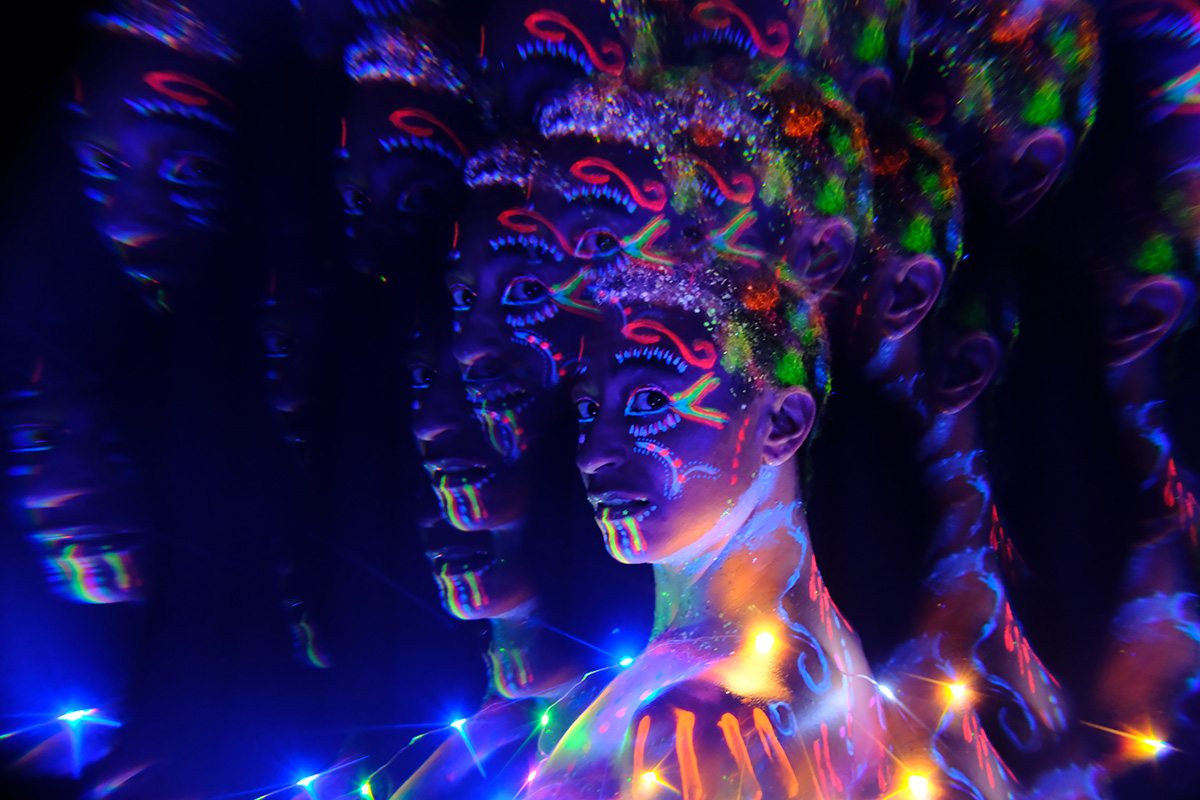
Amid the spate of anti-transgender legislation, the bullying of trans students and lack of gender-affirming care for young people across the country, photographer Gwen Andersen’s photo exhibit seeks to portray the trans and nonbinary community in a positive light.
Andersen’s “Becoming Ourselves” exhibit that documents trans and nonbinary people will be on display at the Bethesda United Church of Christ (10010 Fernwood Road) this summer.
Andersen spearheaded the exhibit along with the Rev. Dr. Jill McCrory from Bethesda UCC. The church paid for the project with a donation it received from Stevie Neal, a trans woman who passed away and left part of her estate to McCrory.
McCrory herself has been a pillar in the LGBTQ community for decades, including while pastor at Twinbrook Baptist Church.
The congregation that McCrory closed dispersed more than $1 million to various ministries and LGBTQ organizations, founded the MoCo Pride Center, and married a same-sex couple on the rainbow stage of Capital Pride in 2010. Bethesda UCC has also marked the Transgender Day of Remembrance, and hosted a renaming ceremony for a trans baptized member.
“I happen to have access to a wonderful transgender woman’s (Stevie) donation that she left me to do something for the transgender community,” said McCrory over a Zoom interview. “Andersen came to Rev. McCrory in November of 2023 with the idea. “Gwen knew Stevie. I thought this would be perfect because this is something that would benefit the transgender community.”
“WIthout Stevie, this surely would not have happened. And I say that with great confidence,” Andersen said in a Zoom interview.
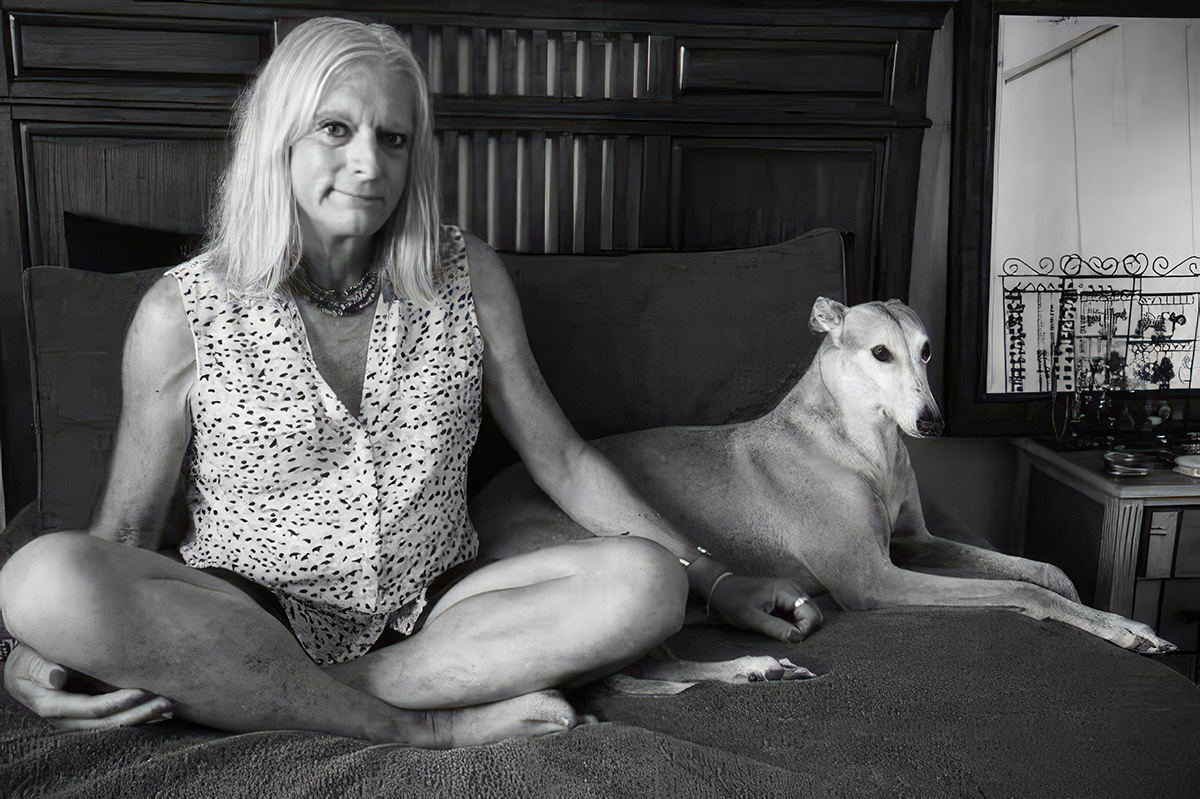
“Becoming Ourselves” debuted at the Unitarian Universalist Congregation of Rockville in March.
The exhibit features photos of trans and nonbinary people from across the country that Andersen and a number of other photographers took.
The photos feature people from all ages — from preteens to elders from all walks of life that include teachers, community leaders, and athletes. Andersen’s exhibit also showcases people who are proudly showing their top surgery scars. It also shows trans and nonbinary people in a variety of ways, from enjoying music, playing sports, and working.
The exhibit most importantly shows them being happy.
Anderson’s exhibit has two main goals: Give a space for trans and nonbinary people to see others in their community in a positive way, and to shift the narrative on how people see trans and nonbinary people.
“It was an emotional issue that won hearts and minds.” said Andersen in reference to the LGBTQ movement to legalize same-sex marriage. “I believe we will reduce the hostility against transgender people by winning hearts and minds.”
“One of the most effective messages is to protect trans kids,” she added. “Right now the hostility has not just gone against adults, it has gone against children, and children are being harassed, beaten up, and killing themselves. In much the same way as gays and lesbians were killing ourselves 30 years ago. I think what will be effective is tugging on hearts and minds and reclaiming the narrative from hate and fear, to love.”
Andersen wants to eventually get a more permanent location for the exhibit rather than bringing it to different venues. But until then, she plans to bring it to other churches that are interested in hosting it.
Anyone interested in supporting Andersen’s exhibit can log onto the “Becoming Ourselves” website, or directly help any of the photographers whose work is showcased. Andersen has directed folks to support photographer Liam Woods, whose online name is Analogue Papi.
Maryland
Moore pardons more than 175,000-plus cannabis-related convictions
Governor signed executive order at State House on Monday
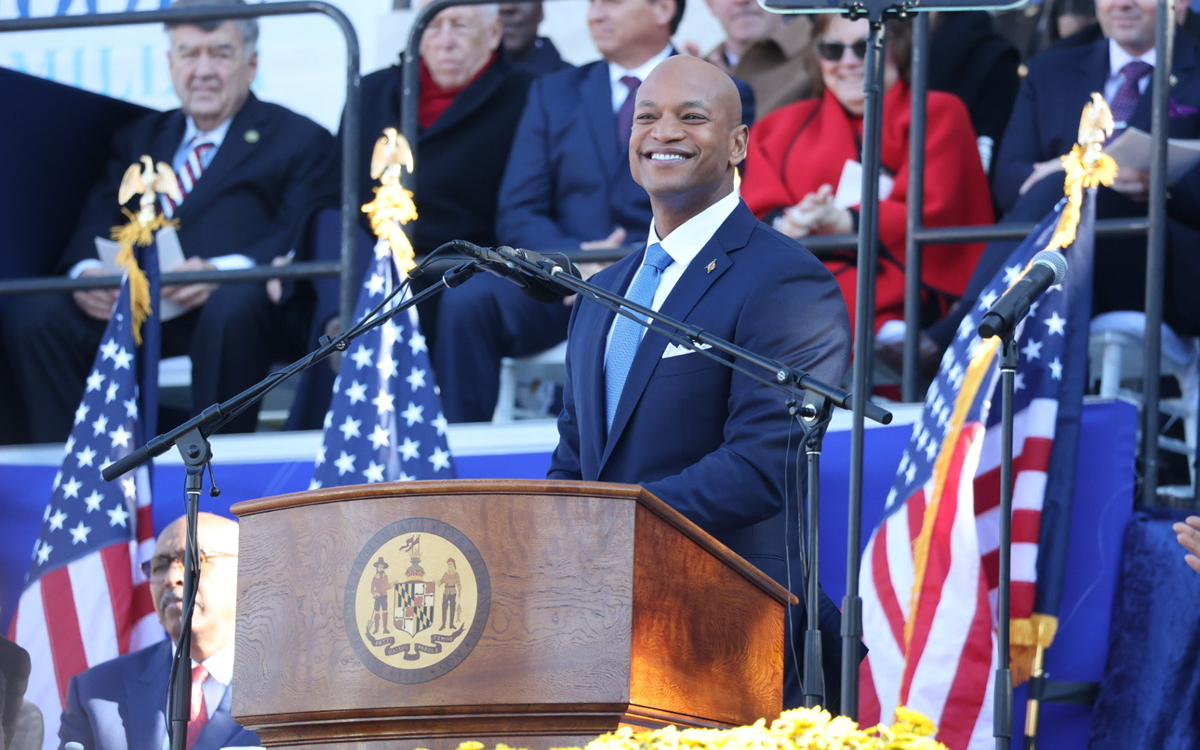
BY BRENDA WINTRODE and PAMELA WOOD | Gov. Wes Moore pardoned more than 175,000 cannabis-related convictions Monday, nullifying guilty verdicts decided when carrying small amounts of the drug or paraphernalia was illegal.
The Democratic governor signed an executive order during a State House ceremony, granting clemency to thousands of people convicted in Maryland. The convictions to be pardoned include more than 150,000 misdemeanors for simple possession and more than 18,000 for possession of drug paraphernalia with an intent to use.
The rest of this article can be read on the Baltimore Banner’s website.
Maryland
Silver Spring Pride sign rebuilt in memory of beloved neighbor
GoFundMe campaign has raised more than $4,000

Residents of Silver Spring’s Rosemary Hills neighborhood have come together to rebuild a Pride sign.
The sign was constructed in June 2020, and was meant to stay in place throughout Pride Month. Neighborhood residents, however, requested it stay up past its intended month-long display, and has remained in place for more than four years.
The sign spelling LOVE is at the neighborhood’s entrance between Sundale and Richmond Streets. It was made from plywood and the O was painted in the colors of the Pride flag.
“We wanted to take it down, but we just felt it was not ours anymore and belonged to the neighborhood.” Tony Brown told the Washington Blade during a telephone interview. “It was a positive thing for the neighborhood and began to take on a life of its own.”
Brown and his partner, Mike Heffner, designed the sign and said the Black Lives Matter movement inspired them to create it as a strong symbol of an accepting community.
The sign was vandalized numerous times last fall, resulting in neighborhood residents taking turns repairing it. Brown and his partner could not do the repairs themselves because Heffner was fighting Stage 4 lung cancer.
Heffner passed away on Oct. 6, 2023.
A GoFundMe page was set up to help raise funds for the replacement Pride sign, and it has raised more than $4,000. The replacement sign is more permanent and made of metal.
“I can’t speak for the neighborhood overall, but people who knew Mike I think are happy that we were able to honor his memory with this sign because this sign is so him,” Molly Chehak, a friend who lives next door to Brown, told the Blade. “He (Heffner) was an outgoing super social (person) who just made you feel good the way this sign does. It’s a perfect tribute to him.”
Chehak and other neighbors created the GoFundMe account.
Heffner’s family and his neighbors are still working to rebuild the Pride sign. It has become a memorial to Heffner.
“We wanted to do one that was clearly a Pride reference,” said Brown, noting the L is a fully painted Pride flag that spirals across the entire letter.
“For the O we wanted to do something reminiscent of times in the past, a throwback to the 60’s and 70’s so it’s a hippie montage of flowers and butterflies,” he said.
Brown described the V as being colorful, nonbinary people hugging each other with the idea that love is more than what one may see.
“During COVID, he had started painting rocks and putting kind and fun messages on them leaving them around places as sort of a pay it forward Karma and so the E is basically that stylized writing and to embrace a bunch of ways we embrace love,” he said.
The final letter had the phrase “love is love” written repeatedly in various handwritings to pay homage to Heffner and what he did for his neighborhood during the pandemic. Brown’s four daughters — one of whom is a professional artist — and their friends designed it.
The landscape around the sign has also been transformed with rocks that honors Heffner’s love for Rosemary Hills and his passion for rocks.
Chehak also said Heffner always wanted a bench, and neighbors are looking to install one soon next to the Pride sign.
-
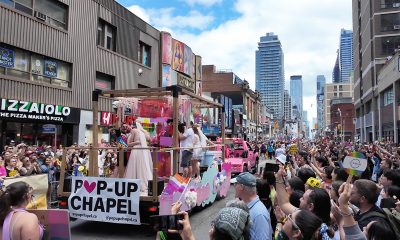
 Canada1 day ago
Canada1 day agoToronto Pride parade cancelled after pro-Palestinian protesters disrupt it
-
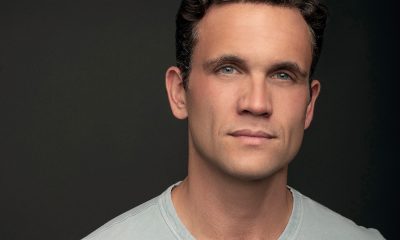
 Theater5 days ago
Theater5 days agoStephen Mark Lukas makes sublime turn in ‘Funny Girl’
-
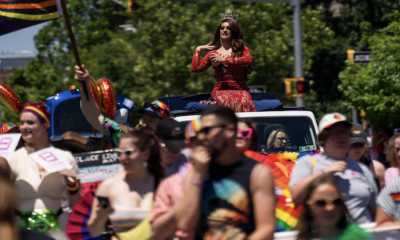
 Baltimore3 days ago
Baltimore3 days agoDespite record crowds, Baltimore Pride’s LGBTQ critics say organizers dropped the ball
-

 Sports4 days ago
Sports4 days agoHaters troll official Olympics Instagram for celebrating gay athlete and boyfriend

